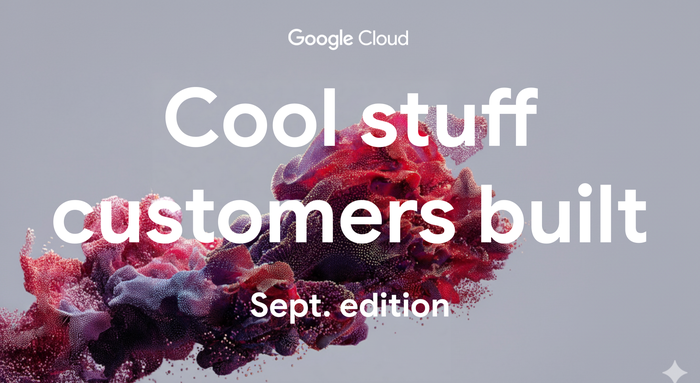Google Cloud at I/O '19: The news you need to know

Google Cloud Content & Editorial
Each year Google I/O brings together developers from around the globe for talks, hands-on learning, and an inside look at Google’s latest products for developers. This year, we at Google Cloud are celebrating all the ways developers can take advantage of cloud technologies to build the next generation of mobile and web applications. Here’s a look at the key announcements from Google Cloud this week at I/O.
Android phone’s built-in security key is now generally available
FIDO security keys provide the strongest protection against phishing and account hijacking and are a must-have for all people who are at risk for targeted attacks, such as IT admins, executives, journalists, and activists. At Next ‘19, we announced beta functionality that lets you use your Android phone as a FIDO security key for your Google and Google Cloud accounts at no additional cost. Today, we are making this feature generally available on phones running Android 7.0+. Admins can also require users to protect their G Suite, GCP and Cloud Identity accounts with a security key, now letting them choose between using a physical security key, their Android phone, or both. To learn more, check out this blog post.
Cloud TPU V2 and V3 Pods are now publicly available in beta
We introduced our Cloud TPU Pods to accelerate the largest-scale machine learning (ML) applications, to train ML models in minutes or hours instead of days or weeks. Today, for the first time, our Cloud TPU V2 and V3 Pods are publicly available, in beta, to help ML researchers, engineers, and data scientists iterate faster and train more capable machine learning models. You can learn more by reading this blog post.
Updates to Google Maps Platform
We announced the launch of Google Maps Platform a year ago to provide the next generation of our Maps, Routes, and Places offerings for developers. Over the last 12 months, we’ve increased the stability, reliability, and performance of our platform to meet a 99.9% uptime SLA and provide data for over 150,000 places, routes that cover 40 million miles of road, and maps that cover 99% of the world.
Today, we announced support for WebGL-powered data visualization with the open source deck.gl library, designed specifically for visualizing large datasets. Additionally, we opened public beta for the latest version of our Maps SDK for Android, which we migrated to the same infrastructure as Google Maps—making it easier to bring you Google Maps features in future releases. To learn more, read this blog post.
Firebase updates: expanded machine learning capabilities, web performance monitoring, and analytics enhancements
Today, Firebase launched a number of updates to help mobile and web developers by making it easier to build their apps, improve app quality, and grow their businesses. Here are three to know.
ML Kit makes machine learning accessible to all app developers, regardless of machine learning experience. Developers can use out-of-the-box APIs to solve common tasks, or host and deploy their own custom models. These models are available on-device or in the cloud, through Google Cloud AI. Today, we’re launching three more capabilities in beta: the Translation API, the Object Detection & Tracking API, and AutoML Vision Edge. These new capabilities complement previous updates including solutions for natural language processing with Language Identification and Smart Reply APIs.
Firebase Performance Monitoring is a popular way for developers of native mobile apps to troubleshoot performance issues. Today, Performance Monitoring is available in beta for web apps as well, giving web developers a deeper understanding of how real users are experiencing their app in the wild.
Google Analytics for Firebase provides free, unlimited, and robust analytics for developers. Today, we’re announcing a completely rebuilt audience builder with a new interface, including new features like sequences, scoping, time windows, membership duration, and more. With it, you can create audiences for personalization through Remote Config or re-engage them through Cloud Messaging and/or the new App campaigns.
For a comprehensive round-up of the Firebase news from I/O, including these announcements and more, read this post on the Firebase blog.
Beyond the cloud
There are plenty more updates to come from Google I/O. To stay up to date, follow Google Developers on Twitter, Facebook, or YouTube, or check out our announcements on The Keyword and the Google Developers blog.



